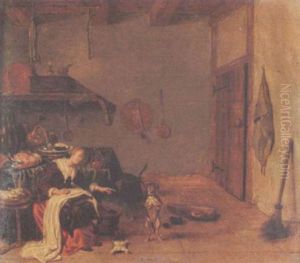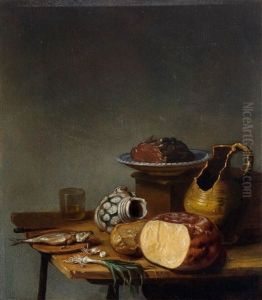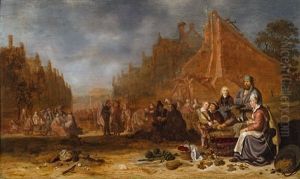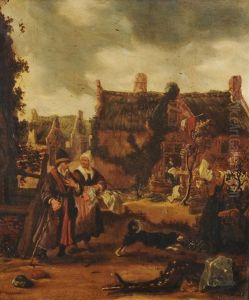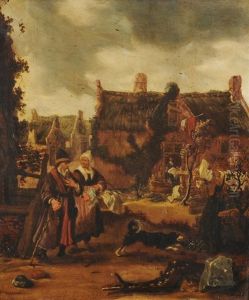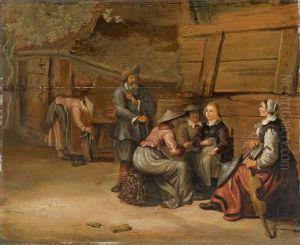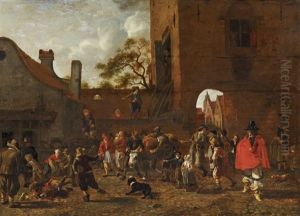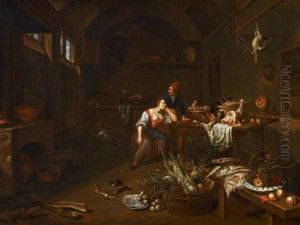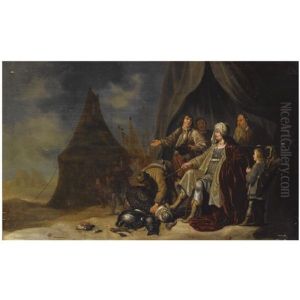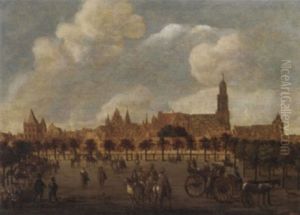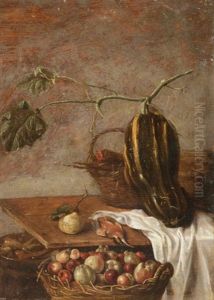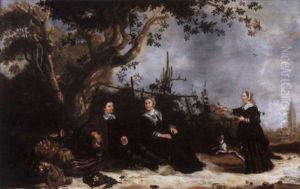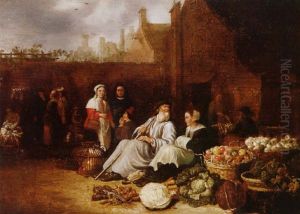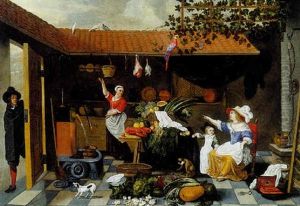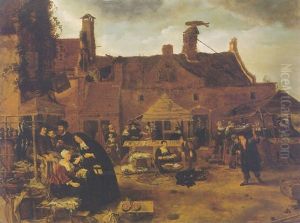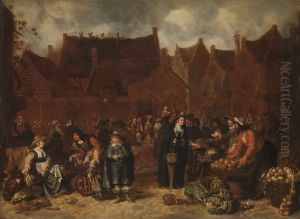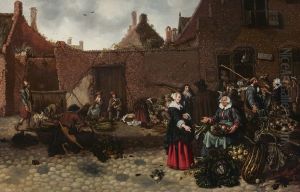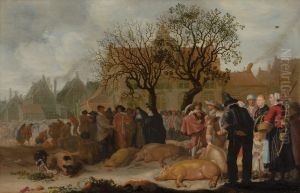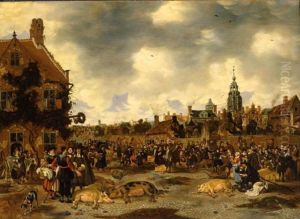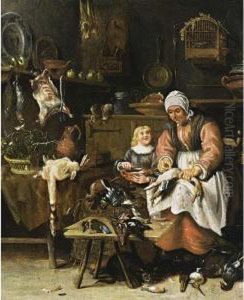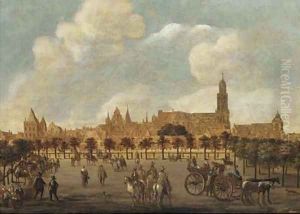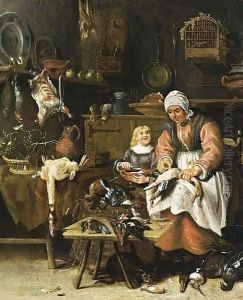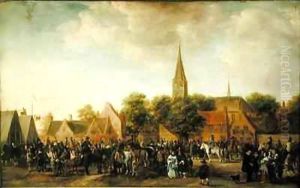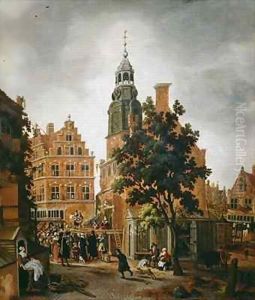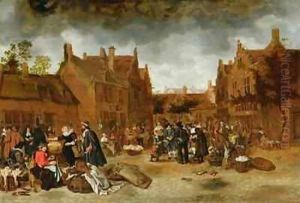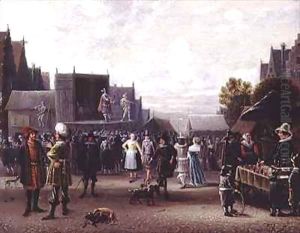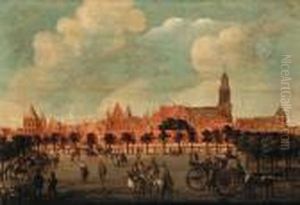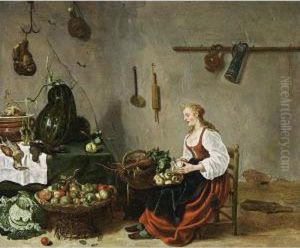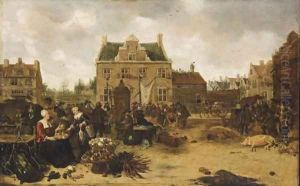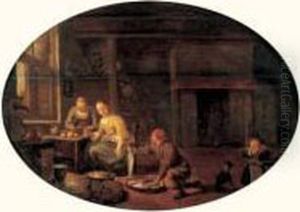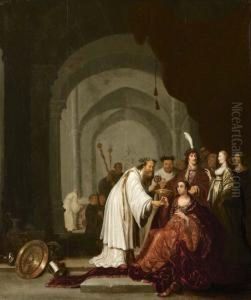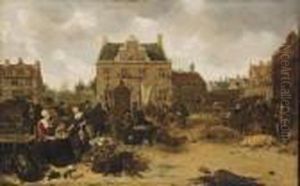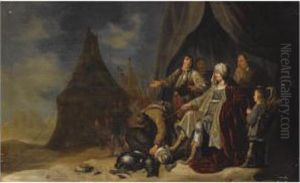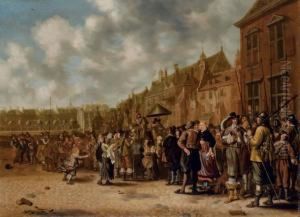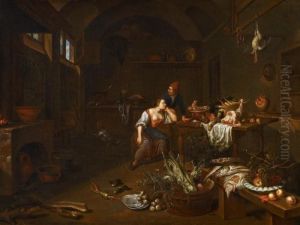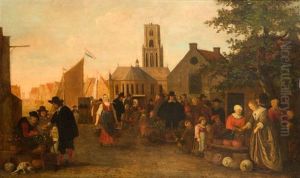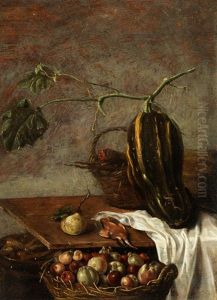Sybrand Van Beest Paintings
Sybrand van Beest was a Dutch Golden Age painter, born in 1610 in The Hague, Netherlands. His work and contributions to art history are situated within the context of the Dutch Golden Age, a period renowned for its exceptional wealth of artistic talent and innovation, particularly in the realms of painting and printmaking. Van Beest is primarily known for his skillful depiction of everyday scenes, landscapes, and particularly for his street scenes and representations of festivals.
Although not as widely recognized as some of his contemporaries, such as Rembrandt or Vermeer, van Beest's work provides valuable insights into the social and cultural life of the Netherlands during the 17th century. He was adept at capturing the vibrancy of public gatherings and the nuanced interactions of people engaged in daily activities. His attention to detail and the ability to convey mood and atmosphere in his scenes are notable aspects of his work.
Sybrand van Beest's artistic career was largely centered in his hometown of The Hague, though records indicate that he may have traveled within the Netherlands for inspiration or commissions. He was a contemporary of Jan Steen and Pieter de Hooch, and while he never achieved the same level of fame, his work similarly reflects the Dutch interest in genre painting and the depiction of bourgeois life.
Van Beest's contributions to Dutch art were part of a larger movement that celebrated the mundane aspects of daily life, turning away from the more traditional religious and historical subjects that had dominated European art for centuries. This shift allowed artists like van Beest to explore new subjects and techniques, contributing to the rich tapestry of Dutch Golden Age painting.
Sybrand van Beest died in 1674 in The Hague. Today, his paintings can be found in various museums and collections, serving as a testament to his role in the development of genre painting in the Dutch Golden Age. His work continues to be studied and appreciated for its historical value and its artistic merit, offering a window into the life and times of 17th-century Netherlands.
